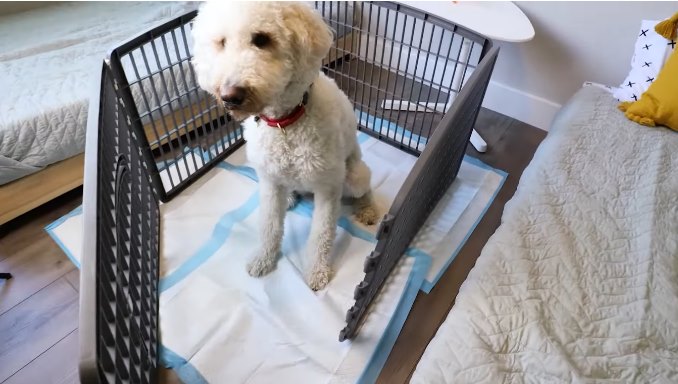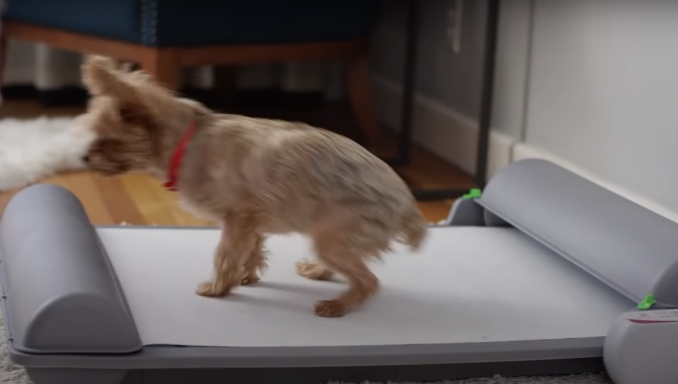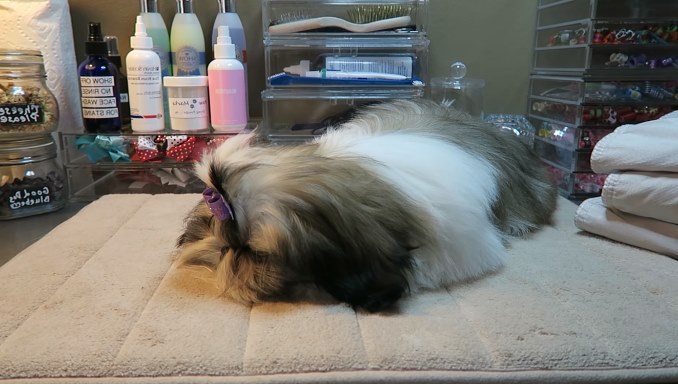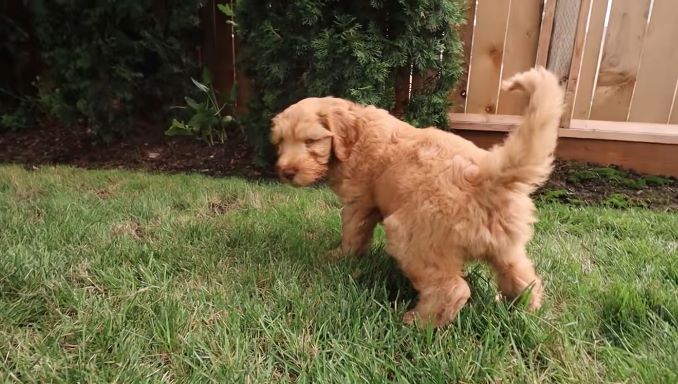How to Puppy Pad Train?
Do you know how to puppy pad train?
Is your new puppy driving you crazy with his or her need to pee all the time? If you’re looking for a way to speed up the housebreaking process, puppy pad training may be right for you. In this article, we’ll discuss what puppy pads are, how to use them, and some of the benefits of this method. We’ll also provide tips on how to successfully train your pup using pads. So whether your new furry friend is already here or coming soon, read on to learn all about puppy pad training!
What Is Puppy Pads?
Puppy pads, also called potty pads or pee pads, are absorbent mats that are designed to protect floors and carpets from accidents. Puppy pads usually have a plastic backing and an absorbent top layer, which can be made of paper towel, fabric, or another material. Some pads also have a built-in attractant, which is meant to lure your pup to the pad when it’s time to go. Before knowing how to puppy pad train, puppy pads are somethings new for first time dog owners.
A puppy pad is a square of absorbent material, usually cardboard or paper, that is placed on the floor for puppies to use as a bathroom. Puppy pads are often used by people who are potty training their puppies and don’t want them going to the bathroom inside the house. Puppy pads can also be useful for people who work long hours and can’t take their puppy out to go to the bathroom as often as they need to. When puppies urinate on the puppy pad, the absorbent material will soak up the urine and prevent it from damaging the floor. Puppy pads are usually disposable and can be thrown away after they’ve been used. Some people choose to wash and reuse their puppy pads, but this isn’t necessary. If you do decide to wash your puppy pads, be sure to use a mild detergent and air dry them completely before using them again. Puppy pads are available at most pet stores and online.
Puppy pads are an easy way to potty train your puppy without having to worry about accidents inside your home. Puppy pads can also be used for dogs that are elderly or sick, and can’t hold their bladder for long periods of time. If you have a dog that is prone to accidents, puppy pads are a great way to protect your floors and furniture. Puppy pads are also useful for dogs that live in apartments or condos, where there may not be an easy way to let them out to go to the bathroom. Puppy pads are inexpensive and easy to use, and they can make potty training your puppy a much easier process.

How To Use Puppy Pads
Puppy pads can be used in a variety of ways, but most people use them indoors as a way to help their pups learn where it’s appropriate to relieve themselves. If you’re potty training a new puppy, you’ll likely want to confine him or her to a small area, like a bathroom, kitchen, or laundry room. This will help prevent accidents while you’re getting the hang of things.
To use puppy pads, simply place them in the designated area and encourage your pup to go on them when it’s time to relieve himself. You can do this by positioning your pup in front of the pad and saying “go potty” or another cue that you’ve established. Once your pup uses the pad, be sure to praise him or her lavishly.
Over time, you can begin to move the puppy pads closer and closer to the door that leads outside. Eventually, your pup should be able to hold it until he or she gets to the door, at which point you can take him or her outside to do his or her business.
Now you know a little about how to use puppy pads, in the section below, I will guide you on How to puppy pad train, keep reading!
Benefits Of Using Puppy Pads
Puppy pads have a number of benefits over other potty training methods. For one, they’re much less messy than traditional methods, like using a litter box. They’re also more convenient for pet parents who work long hours or live in small apartments, since they can be used indoors. Puppy pads are also great for senior dogs who may be having accidents due to age-related incontinence. Knowing how to puppy pad train have many benefits.
Puppy pads can be a great way to help train your puppy and keep your home clean. Here are some of the benefits of using puppy pads:
1. Puppy pads can help to potty train your puppy. By placing the pad in a designated area, you can teach your puppy where it is appropriate to go to the bathroom.
2. Puppy pads can help to keep your home clean. If your puppy has an accident, the pad will absorb the mess and prevent it from spreading to your floor or furniture.
3. Puppy pads can be convenient for busy pet parents. If you work long hours or are away from home frequently, puppy pads can give your puppy a place to relieve himself when you are not around.
4. Puppy pads can be used in conjunction with other potty training methods. If you are using a crate for potty training, you can place a puppy pad inside the crate so that your puppy has somewhere to go if he needs to relieve himself while you are away.
5. Puppy pads can be helpful for puppies with medical conditions that make it difficult for them to hold their bladder. If your puppy has incontinence or another condition that causes him to urinate frequently, a puppy pad can help to catch the mess and prevent accidents in your home.
Puppy pads can be a great tool for potty training your puppy and keeping your home clean. If you are considering using puppy pads, talk to your veterinarian or a professional dog trainer to get started.

How To Puppy Pad Train Your Dog Step By Step
1. Choose the right puppy pad. There are many different types of puppy pads on the market, so it’s important to choose one that is right for your needs. Consider the size of your dog, the absorbency of the pad, and whether you want a pad with a built-in attractant.
2. Place the puppy pad in the designated area. Once you’ve chosen the right puppy pad, it’s time to place it in the designated area. This may be a specific room in your home, or it may be an area of your yard.
3. Encourage your pup to use the pad. Once the puppy pad is in place, encourage your pup to use it by positioning him or her in front of the pad and saying “go potty.” You may also want to use an attractant, like a treat or toy, to help your pup understand that this is the spot where he should relieve himself.
4. Reward your pup for using the puppy pad. When your pup uses the puppy pad, be sure to praise him or her lavishly. This will help to reinforce the positive behavior and encourage your pup to use the pad again in the future.
5. Move the puppy pad closer to the door. Once your pup is using the puppy pad consistently, you can begin to move it closer and closer to the door that leads outside. This will help your pup to understand that the puppy pad is a stepping stone to going potty outside.
6. Phase out the puppy pad. Once your pup is using the puppy pad consistently and going to the door when he or she needs to relieve him or herself, you can begin to phase out the puppy pad. Start by moving it to an adjacent room, and then eventually remove it altogether. Remember to praise your pup for good potty habits to reinforce the positive behavior.
Puppy pads can be a great way to help train your puppy and keep your home clean. With a little patience and consistency, you can use puppy pads to successfully potty train your pup and help him or her learn good bathroom habits for the future.
Potty Training Tips
Now that you know all about how to puppy pad train, here are a few tips to help you get started:
1. Choose the right size pad. Puppy pads come in a variety of sizes, so be sure to choose one that’s appropriate for your pup. If the pad is too big, he or she may not be able to use it effectively. Conversely, if the pad is too small, your pup may end up making a mess outside of the pad.
2. Place the pads in strategic locations. Put the puppy pads in locations that are easy for your pup to get to, like next to the door or in his or her designated potty area. You should also put them in areas where your pup spends a lot of time, like his or her dog bed or crate.
3. Consider using an attractant.If your pup isn’t interested in using the pads, you may want to try using an attractant. This can be something as simple as placing a small amount of your pup’s food on the pad, or you can buy special attractants that are designed for puppy pads.
4. Be consistent. The key to successful potty training is consistency. So be sure to take your pup out to relieve himself at the same times each day, and place him on the puppy pad whenever you think he needs to go.
5. Have patience. Potty training takes time, so be patient and keep at it. Eventually, your pup will get the hang of things and you’ll be able to say goodbye to those puppy pads for good!
If you have any questions about potty training with puppy pads, be sure to talk to your veterinarian or a professional dog trainer. They can offer additional tips and advice to help make the process as smooth as possible for both you and your pup.

How To Use Puppy Pads And Outdoor Potty Training Together
Puppy pads can be a great way to help your dog learn where it is appropriate to go to the bathroom. When you are potty training your pup, you may want to consider using puppy pads indoors in addition to taking them outdoors. How to puppy pad train outdoor.
Here are a few tips on how to use puppy pads and outdoor potty training together:
1. Put the puppy pad in an area that is easy for your pup to get to. You may want to put it near the door that you will be using to take them outside.
2. When you take your pup outside to go potty, bring them back inside and immediately put them on the puppy pad. This will help them to associate the two activities.
3. Be sure to praise your pup when they use the puppy pad. This will reinforce the behavior.
4. If your pup has an accident on the puppy pad, simply clean it up and do not punish them. Puppies are learning and accidents will happen.
5. Once your pup is consistently using the puppy pad, you can start to phase it out by gradually moving it closer to the door or removing it altogether.
Using puppy pads in conjunction with outdoor potty training can be a great way to help your pup learn where it is appropriate to go to the bathroom. Be sure to praise your pup when they use the puppy pad and have patience when accidents happen. With time and consistency, your pup will be successfully using the bathroom both indoors and out.
How Many Puppy Pads Should I Put Down?
How to puppy pad train will include knowing how many pads shoud you put down. This is a common question that dog owners have when they are potty training their furry friend. The answer may vary depending on a number of factors, such as the size of your dog and the amount of time they will be spending inside. However, a good general rule of thumb is to start with two puppy pads and then adjust as needed.
If you find that your dog is having accidents more often than not, then you may need to add an additional puppy pad or two. On the other hand, if things seem to be going well and your dog is only having an occasional accident, then you can probably get away with fewer pads.
Ultimately, it will just take a bit of trial and error to figure out the right number of puppy pads for your particular situation. So don’t get too discouraged if things aren’t perfect at first. With a little patience and perseverance, you’ll eventually find the perfect potty training solution for your pup.
The number of puppy pads you should put down will depend on a few factors, including the size of your home and the age and behavior of your pup. If you have a large home, you may need to put down several puppy pads in different locations. If you have a small home or your pup is older and has good bathroom habits, you may only need one or two puppy pads. If your pup is young or has accidents frequently, you may need to put down several puppy pads in different locations to help him learn where it is appropriate to go to the bathroom.
Whatever the case may be, be sure to talk to your veterinarian or a professional dog trainer for advice on how many puppy pads you should put down in your home.

Things To Avoid When Using Puppy Pads
Knowing what to avoid when using puppy pads is also an important part of how to puppy pad train.
While puppy pads can be a helpful tool for potty training, there are a few things you’ll want to avoid when using them:
1. Don’t punish your pup for accidents. It’s inevitable that there will be accidents when you’re potty training your pup, so don’t get frustrated and punish him when it happens. This will only serve to confuse and stress him out, and it will make the potty training process take even longer.
2. Don’t use the pads as a crutch. Puppy pads can be helpful in the potty training process, but they shouldn’t be used as a crutch. Once your pup is consistently using the pads, begin phasing them out so that he can learn to go potty outside.
3. Don’t forget to praise your pup. Be sure to praise your pup when he or she goes potty on the puppy pad, even if it’s just a small accident. This will reinforce the positive behavior and encourage your pup to use the pad again in the future.
4. Avoid using too many puppy pads. While puppy pads can be helpful, using too many of them can actually make potty training more difficult. This is because your pup may start to think that it’s okay to go potty anywhere, not just on the pad. If you find that you’re using a lot of pads, try phasing them out so that your pup can learn to go potty in a specific area.
5. Don’t forget to take your pup out regularly. In addition to using puppy pads, you’ll also need to take your pup out on a regular basis so that he can learn to go potty outside. This is an important part of the potty training process, so be sure to set aside time each day to take your pup for a walk or to the park.
Potty training can be a challenge, but it’s important to be patient and consistent. Puppy pads can be a great way to help train your puppy, but it’s important to use them correctly. By following these tips, you can successfully potty train your pup and help him or her learn good bathroom habits for the future.
Possible Problems With The Use of A Puppy Pad
Puppy pads can be a great tool for potty training your puppy, but there are some possible problems that you should be aware of. One problem is that your puppy may start to associate the pad with going to the bathroom and not want to go outside at all. Another problem is that your puppy may start to use the pad as a place to sleep or play, rather than a place to go to the bathroom. Finally, if you don’t clean the pads regularly, they can become a breeding ground for bacteria and viruses. If you’re using puppy pads, be sure to monitor your puppy’s use of them and make sure they are being used as intended.
How Long Should You Use Puppy Pads?
To answer this question, in adition how to puppy pad train, you will need somethings to know. How long you should use puppy pads will depend on a few factors, including the size of your home and the age and behavior of your pup. If you have a large home, you may need to use them for several weeks or even months. If you have a small home or your pup is older and has good bathroom habits, you may only need to use them for a week or two. If your pup is young or has accidents frequently, you may need to use them for several weeks or even months.
You should stop using puppy pads when your pup is consistently going potty outside. This typically takes several weeks or even months of consistent training. Once your pup has mastered going potty outside, you can begin phasing out the puppy pads. Start by reducing the number of pads you use, then eventually stop using them altogether. Remember to be patient and consistent throughout the process. If your pup has accidents, clean them up immediately and don’t punish your pup. With time and patience, you can successfully train your pup to go potty outside.
Whatever the case may be, be sure to talk to your veterinarian or a professional dog trainer for advice on how long you should use puppy pads. They will be able to help you create a potty training plan that is tailored to your individual pup and situation.
What Kind Of Puppy Pad Should I Use?
There are a variety of puppy pads on the market, so it’s important to choose one that meets your needs and preferences. Some factors you may want to consider include absorbency, size, price, and durability. If you have a small dog, you’ll want to make sure the pad is small enough for them to comfortably use.
Similarly, if you have a large dog, you’ll want to choose a pad that is large enough for them to use without too much wasted space. Be sure to consider how absorbent the pad is, as this will be important in preventing any accidents. You may also want to consider the price of the puppy pad, as some pads can be quite expensive.
Lastly, think about how durable the pad is. Some pads are designed to be used multiple times, while others may need to be replaced after just one use. Choose the puppy pad that best meets your needs and preferences to help make potty training as easy as possible for both you and your pup!
If I Don’t Have a Puppy Pad, Is There Any Way I Can Train Them to Go Outside?
If you don’t have a puppy pad, you can still train your pup to go potty outside. The key is to be consistent and patient. Start by taking your pup out on a regular basis so that he or she can learn to go potty in a specific area. Be sure to praise your pup when he or she goes potty in the designated area. If accidents happen, clean them up immediately and don’t punish your pup. With patience and consistency, you can successfully train your pup to go potty outside.
Puppy pads can be a helpful tool in the potty training process, but they shouldn’t be used as a crutch. Once your pup is consistently using the pads, begin phasing them out so that he can learn to go potty outside.

FAQs of How to Puppy Pad Train
Where to buy puppy pads?
You can purchase puppy pads at most pet stores or online.
How often should I change my puppy’s pad?
It depends on the absorbency of the pad and how frequently your pup uses it. If the pad is highly absorbent, you may only need to change it once a day. If the pad is not as absorbent, you may need to change it multiple times a day.
How do I know if my pup is ready to go without puppy pads?
If your pup is consistently going potty outside, he or she is likely ready to go without puppy pads. You can begin phasing out the pads by reducing the number you use, then eventually stopping altogether. Remember to be patient and consistent throughout the process.
Puppy pads can be a helpful tool in the potty training process, but it’s important to eventually transition your pup to going potty outside. With time and patience, you can successfully train your pup to go potty without the use of puppy pads.
Can an 8 week old puppy be potty trained?
Yes, 8 week old puppies can be potty trained. With consistency and patience, you can start litter box or yard training at this age. Start by taking your puppy outside to the same spot after they eat, drink, wake up from a nap, or just playing around. Be sure to bring lots of treats as positive reinforcement when they do their business outside. You may also want to give your puppy a designated spot to go potty in the house (like a litter box or training pad) so they can start associating that area with going potty. With patience and positive reinforcement, your 8 week old puppy will soon be fully potty trained! Good luck!
How much are puppy pads?
Puppy pads can vary in price, depending on the brand, absorbency, size, and durability. Usually they cost from $10 to $40. Some puppy pads can be quite expensive, while others are more affordable. Choose the puppy pad that best meets your needs and preferences to help make potty training as easy as possible for both you and your pup!
Why is puppy chewing pee pad?
Puppy chewing on the pee pad may be a sign that he or she is teething. Puppies typically start teething at around 3 to 4 months old. Chewing on the puppy pad can help relieve some of the discomfort associated with teething. If your pup is consistently chewing on the pads, you may want to consider providing him with a chew toy to help deter him from chewing on the pads.
Conclusion
Puppy pad training can be a great way to housebreak your new pet. By following the simple tips we’ve outlined in this post, you can have your puppy pad trained in no time. Remember, it takes patience and consistency to train your pup, so be patient and keep at it! Do you have any questions about how to puppy pad train? Let us know in the comments below.
Above is the article “How to puppy pad train?”. Thanks for reading!








